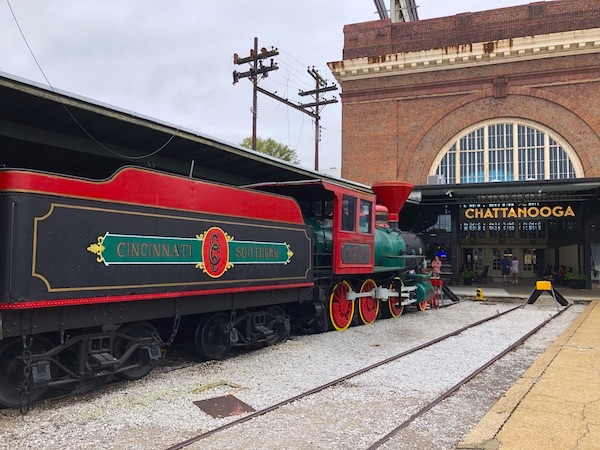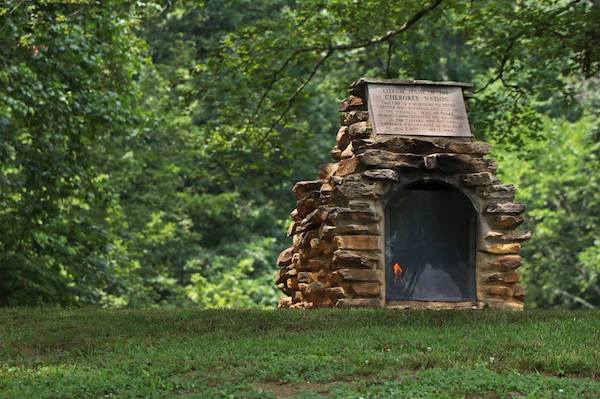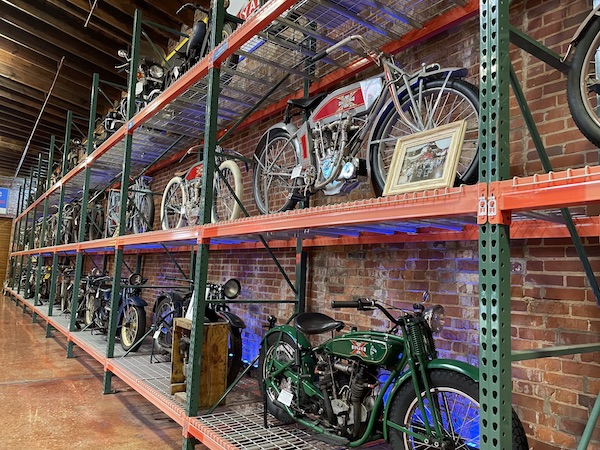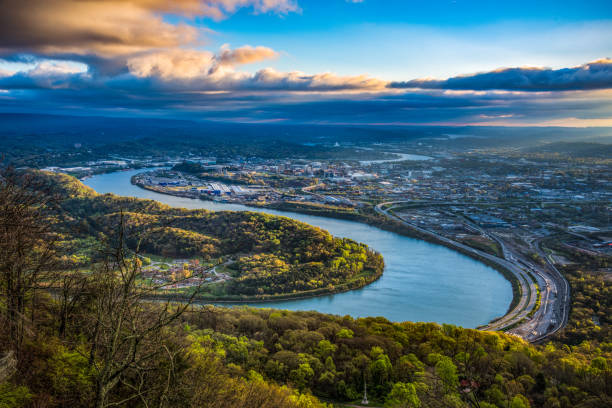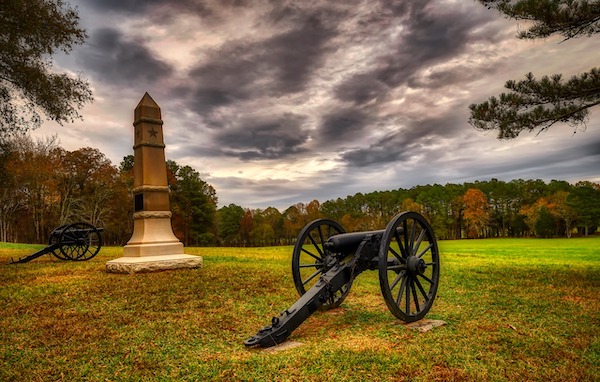
Top 5 Historic Sites in Chattanooga
Straddling the Tennessee River at the foothills of the Appalachian Mountains, Chattanooga is easy on the eyes. Thanks to those rolling green hills and the river’s serpentine course, this southern Tennessee town has been dubbed the “Scenic City.”
But Chattanooga also offers a rich history: the city was a Civil War battleground, and its Chickamauga & Chattanooga National Military Park is the largest and oldest military park in the nation.
The city was also a major railway hub throughout the 19th and 20th centuries, hence the ‘Chattanooga Choo-Choo,’ which was originally a reference to the Cincinnati Southern Railroad’s passenger service from Cincinnati to Chattanooga, and later the title of a 1941 Glen Miller tune.
The walkable downtown is a maze of historic stone and brick buildings featuring tasty gourmet kitchens, craft breweries and distilleries. Elsewhere, year-round opportunities for incredible outdoor adventures abound, thanks to its abundance of green space, including the 13-mile-long Tennessee Riverwalk, and natural wonders, like Ruby Falls, one of the world’s largest underground waterfalls.
We think that the best way to see the “Scenic City” is by bike! Read more about a few of the awesome places you’ll see while cycling in and around Chattanooga!
Chattanooga Choo-Choo
No visit to Chattanooga is complete without a visit to this famous alliterative spot! On our first day of riding, we’ll cruise around town to see a few Chattanooga classics. After the ride, we’ll go to the Chattanooga Choo-Choo together for hors d’oeuvres and a cocktail.
In 1909, the Terminal Station opened as the first railway station in the South, designed in the famous Beaux Arts style. A newspaper reporter dubbed the huffing and puffing little steam locomotive the Chattanooga Choo Choo. The name became known after after Glenn Miller’s orchestra made the catchy song popular in the 1940s. The Chattanooga Choo Choo song traveled fast throughout the circles of Europe during World War II and became an international favorite. After the station closed, the Choo Choo Hotel was added to the National Register of Historic Places in 1974 and remains one of the city’s first historic preservation projects.
Red Clay State Park
Red Clay State Park is an important landmark we’ll visit on our cycling tour of Chattanooga. This 263-acre park was set aside more than 25 years ago to mark the last location of the Cherokee councils before the 1838 Trail of Tears, the forced march of the American Indians from the Southeast to Oklahoma.
Red Clay was the seat of Cherokee government from 1832 until the forced removal of the Cherokee in 1838. By 1832, the State of Georgia had stripped the Cherokee of their political sovereignty and banned all political activity in Georgia. As a result, the Cherokee capital was moved from New Echota, Georgia, to Red Clay, Tennessee. The Trail of Tears really began at Red Clay, where the Cherokee learned that they had lost their mountains, streams and valleys forever.
The site contains a natural landmark, the Blue Hole Spring, which arises from beneath a limestone ledge to form a deep pool that flows into Mill Creek, a tributary of the Conasauga and Coosa River system. The spring was used by the Cherokee for their water supply during council meetings.
The Coker Museum
Here’s a super-unique spot in Chattanooga! Located in the heart of Chattanooga’s Historic Southside, The Coker Museum has been lots of things – it housed a White Truck Dealership at the turn of the century as well as Coker Tire’s inventory. (Coker Tire Company is a Chattanooga-based company that manufactures and sells vintage-style Michelin, Firestone, BF Goodrich and Uniroyal tires for collector automobiles. The company was originally a tire and service center founded in 1958 by Harold Coker.)
The building has been polished up to house Corky Coker’s personal automobile collection. Corky grew the collection during his career at Coker Tire. With over 100 well-maintained, driveable vintage cars, motorcycles, trucks, bicycles, neon signs, juke boxes, buses and even 3 airplanes hanging overhead, there’s something for everyone here!
Chickamauga & Chattanooga National Military Park
This sprawling battlefield was the scene of an interesting chapter for the Confederate army. The small city of Chattanooga, with 2500 inhabitants, lay on the banks of the Tennessee River where it cut through the Appalachian Mountains. It was the crossroads for four major railroads, so President Lincoln wanted to capture Chattanooga to cut off vital Confederate supply lines.
After two days of fierce fighting, the Rebels broke through Union lines and forced the Federals into a siege at Chattanooga.
At the end of a summer that had seen disastrous Confederate losses at Gettysburg and Vicksburg, the triumph of the Army of Tennessee at Chickamauga was a well-timed turn-around for the Confederates, but it came at a great cost. Chickamauga was the second bloodiest battle of the Civil War, ranking only behind Gettysburg, and was by far the deadliest battle in the Western Theater. (The Confederate army lost a crippling 20 percent of its force in the battle.)
Lookout Mountain
Lookout Mountain is maybe one of the most visible historic attractions in Chattanooga – Lookout Mountain rises 2000 feet above sea level and overlooks Chattanooga along the southeastern Tennessee state line. The views from the top are incredible, and there are a few attractions there as well: Rock City, Ruby Falls, the Incline Railway and Chickamauga & Chattanooga National Military Park.
Lookout Mountain was the scene of the 18th-century “Last Battle of the Cherokees” in this area during the Nickajack Expedition.
During the Civil War, the Confederate Army followed up their victory at Chickamauga in September 1863 by pursuing the Union Army to Chattanooga. As Union troops prepared to defend the city, the Confederates encircled the city and prepared to lay siege.
From early October through late November, Confederate troops perched high atop Lookout Mountain could observe the Union Army down below, and artillery positions on the point of the mountain could choke off Union supply routes, as well as shell Union positions down on Moccasin Bend.
On November 24, 1863, Union troops under the command of General Joseph Hooker swept the northern slopes of Lookout Mountain in what became known as the “Battle Above the Clouds.” For the rest of the Civil War, Lookout Mountain was a tourist destination for Union soldiers and civilians, and a photographer even established a studio to capture portraits of soldiers on the point. You can get a selfie up there and become part of history!
Curious to see Chattanooga for yourself?
Check out our Cycling Chattanooga Bike Tour, a hub-and-spoke style tour where we’ll stay all three nights at the fabulous Dwell Hotel in downtown Chattanooga.


